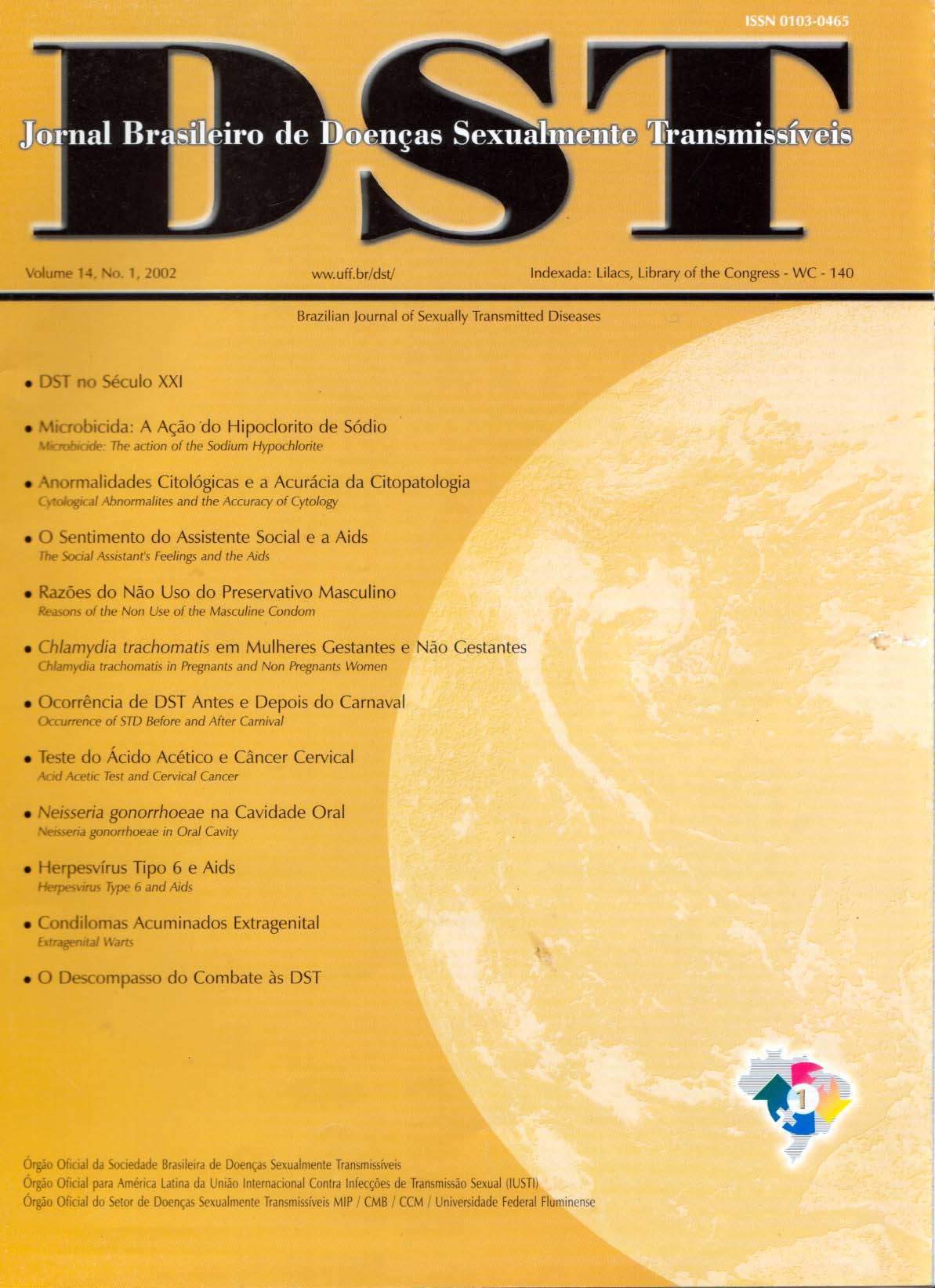A classic and potente microbicide
the action of the sodium hypoc hlorite in vaginal infection
Keywords:
Hypoclorite, M icrobicide, Vaginitis, TreatmcntAbstract
Introduction: Vaginal discharge is a frcquenl complaint in gynecological practicc. BactériaL vaginosis, candidiasis and trichomoniasis are the most prevalent etiologies of this problcm. Several substances with microbicidaL activity are being lested for this condition. Chlorinc-based compounds have potenl hislorically eslablished action. Objectivcs: To identify the most common microorganisms causing vaginal infections; to test lhe lherapeutie efficacy of a 750 ppm solution of sodium hypochloride used as a vaginal douche for lhe trealmcnt of vaginal discharge. as compared to a control group using a placebo solution. Metodology: Double-blínd. comparative study with randomly selected study subjccls assigned lo two groups: a) 55 patients using placebo (bi-distillcd water) as a vaginal douche for 10 days; b) 57 patients using a 750 ppm hypochloride solution as a vaginal douche for the same period. The following lests were done: culture of vaginal secretions for aerobic. facultative and anacrobic bactéria, fungi and Tríchomonas vaginalis. vaginal pH measurement. oncotic colpocitology. sodium. potassium and chlorine scrum levei measurements. Clinicai examinalion of the vulva, vagina and ccrvix. as well as all specimen collection were done by or with supervision of the main author. Only patients who agreed to and followed lhe whole protocol were included. Resulte: 'l he most frequently isolated microorganism was G. vaginalis. followed by S. epidermidis. S. agalactie, Laciobacilhis sp., Candida albicans. Tríchomonas vaginalis. fíactcnndesmelanogenicns(Prevotella melanogcnica). The hypochloride-lreated group had significantly better clinicai, bacteriological and cytological evolulion than the placebo group. No alterations in sodium. potassium and chlorine scrum concentrations were found. No important secondary effecls were registered for bolh groups. In lhe patients’ own evaluation. X7.72*# of the hypochloride-treated group considered lhe outeome excellcnt. compared to 7.72C* who proferred the same opinion in lhe placebo group. In the examiner s evaluation. 77.19%had an excellcn oulcome in the hypochloride group. against 3.63% in the placebo group. Concluston: Allhough G. vaginalis was the most frequently isolated microorganism in this study. other pathogens deserve attenlion: the tópical microbicidal agent sodium hypochloride showed great efficacy, was considered easy to use and was well accepted by the patients.












